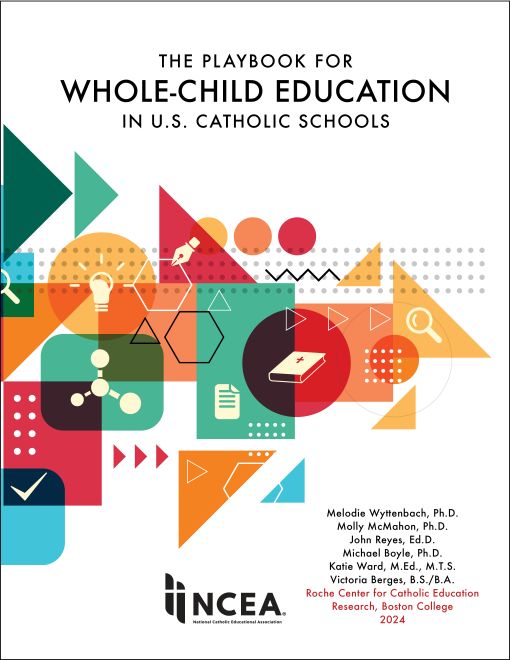It does not matter how many points you score... or how many followers you have. You have infinite worth because God made you.
Written by Andrew Fasullo, assistant principal, Saint Andrew Catholic School (Newtown), Archdiocese of Philadelphia, [email protected]
“Life is precious and a gift! Your life is precious and a gift! Never forget that.” These three sentences stemming from my watching of EWTN’s Pro-Life Weekly, and of course inspired by the Holy Spirit, sprung from my lips at the end of every taught high school theology class. So accustomed to these words were my students that they would exclaim, in eager anticipation of transitioning to their next class I might add, “You forgot your favorite words!” You see, it was their cue that they were free to leave. However, beyond any classroom ritual, or informal classroom exit ticket, these words represented proclaimed truth—these students’ inherent and infinite worth as made in the image and likeness of God. As I would articulate in the first late summer, introductory back-to-school session, “It does not matter how many points you score, or how many likes you get, or how many followers you have. You have infinite worth because God made you.”
Infinite Worth: More Than a Classroom Phrase
Just as important as it was for me to proclaim to my students that God made them with great love and with infinite worth, it was for me to proclaim to them that He did the same for that boy or girl sitting in the desk next to them. For recognizing one’s own human dignity is not just recognizing who one is but whose one is—belonging to Christ in His One Body. Calling on my own religion classes and life experiences, I witnessed for my students to the truth that through our free will we can choose to live up to our human dignity—our infinite worth—just as we can choose to live below it. For instance, regardless of reason, when we fail to acknowledge another person in our world with whom we cross paths, we are essentially saying that he or she is not another person made by God with great love. Made with great love, each of us, including our students, is called to much more than that.
Living Love in the Classroom
Therefore, also embedded in that late summer introduction was what it means to live out one’s human dignity—“being a person of love.” More specifically, it is a lesson on a key distinction, the difference between a good person and a person of love. A good person minds his or her own business. When a peer needs help, a good person does not do anything wrong per say—no taunting, teasing or harassing—but he or she also does not reach out to that fellow brother or sister in charity. In contrast, as demonstrated to us poignantly in the Parable of the Good Samaritan, a person of love recognizes the scourged and beaten body of Christ in each of his brothers and sisters, and importantly, chooses to act on that truth. Living up to one’s human dignity reflects the charity with which we were made.
What do these deep and beautiful truths mean for our teaching and ultimately our students? First, these truths should spur us to recognize the great treasure before us—eternal souls. We must not lose sight of the fact that in each of our assigned desks or spots is someone’s baby boy or baby girl and notably, a unique, unrepeatable soul. Furthermore, we must equally recognize that these children are going somewhere, and I do not mean the next grade level, high school math placement or long sought-after college. Most importantly, each of our students is destined for heaven.
Once we recognize our students’ human dignity, then we must help them to recognize it themselves. Urgently and fervently, we must teach them about love. As our Lord, the master catechist, taught us: to love is to know, to love is to give life and to love is to will the good of the other. Envision a classroom where students genuinely get to know each other, give their lives through their time, effort and energy to each other, and empathetically and whole-heartedly cheer for each other. It is a culture of love and one to which each child is called because of his or her human dignity.
Teaching Through Witness
A classroom culture of love is fostered through the teacher’s example. Stemming from our Lord’s own teaching example, every skilled teacher knows this element of successful pedagogy—teaching through modeling. A wise mentor teacher of my mother’s, for instance, is fondly remembered for instilling in her apprentice teachers that, “Teaching is not telling.” Similarly, as St. Francis of Assisi is attributed to saying, “Preach the Gospel at all times, and if necessary, use words.” Students learn from a teacher’s modeling of the desired behavior and importantly, through their own practice and living of it.
So, during that late summer introductory class session, while three-strike rules and classroom contracts certainly have their place, keep in mind the lasting value of instilling lived formation. Recognize the treasure before you, strive for your students to recognize it themselves and from those beginning class days, find meaningful ways for them to live it. Life is precious and a gift! Your life is precious and a gift! Never forget that.














